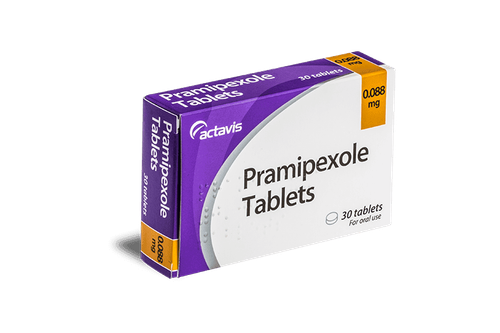This is an automatically translated article.
Syndopa is indicated for use in idiopathic or chronic neurological Parkinson's disease caused by effects on the nervous system or carbon monoxide and manganese poisoning. So what is Syndopa 275?1. Effects of Syndopa
What is Syndopa 275? Syndopa is an anti-parkinsonian drug used to treat symptoms caused by idiopathic Parkinson's disease, or parkinsonian-like conditions following encephalitis, and parkinsonian-like symptoms that may follow trauma to the nervous system caused by toxins. of carbon monoxide and manganese.
Syndopa is indicated in these situations allowing low doses of levodopa to be taken to relieve nausea and vomiting, with more rapid titration and somewhat quicker response. Supplementation of pyridoxine (vitamin B6) by oral doses of 10 mg to 25 mg may reverse the effects of levodopa by increasing the proportion of decarboxylated aromatic amino acids. While carbidopa works to block this effect of pyridoxine, so Syndopa is indicated for patients taking pyridoxine supplements. Because carbidopa prevents the reverse effects of levodopa caused by vitamin B6, Syndopa can be used in patients taking vitamin B6 supplements. approved, but in some cases your doctor may prescribe Syndopa. Therefore, before taking the medicine, consult your doctor.
2. How to use Syndopa
Syndopa 275 mg is formulated as a tablet containing the active ingredient in a ratio of 1:10, with a ratio of 2 substances that can be used individually or in combination when dose optimization is required. Dosage will be based on the condition and age of the patient. Some studies have shown that peripheral dopa decarboxylase is saturated by carbidopa doses of about 70-100 mg/day. Patients receiving doses below this range of carbidopa tend to have nausea and vomiting.
The best usual starting dose is 1 Syndopa 25-100 tablet taken 3 times a day. This dose provides 75 mg/day of carbidopa. This dosage may be increased by one tablet daily or every other day as needed until a dose of 8 Syndopa 25-100/day tablets is reached. When taking drugs in high concentrations, Syndopa 275, the dose is 1 tablet 3-4 times/day. If taking Syndopa dose 10-100 start with 1 tablet 3-4 times a day. However, this dose will not provide enough carbidopa for many patients. The dose should be increased by 1 tablet daily or every other day until a total dose of 8 tablets is reached.
With maintenance dose, treatment should be individualized and dose adjusted according to the purpose of therapeutic response. A minimum of 70-100 mg/day of carbidopa should be used. When increasing the dose of carbidopa, use 1 tablet of Syndopa 25-250 instead of Syndopa 25-100 or Syndopa 10-100. If necessary, it can be increased to 1.5 Syndopa 25-250 tablets or 1 tablet per day or every other day to a maximum dose of 8 tablets / day
Patients can take the drug with or without food, before or after eating. However, to reduce stomach irritation you can take it with food and need to swallow the tablet whole with a full glass of water, do not chew or break the tablet. To use this medicine safely, take Syndopa exactly as directed by your doctor, do not use it more often, for less or for longer than prescribed.
3. Undesirable effects when using Syndopa
Syndopa 275 mg can cause some unwanted and common side effects that can be mentioned as:
Chorea Dystonic and other involuntary activities Paranoia Depression Schizophrenia One some serious side effects such as chest pain, weakness, drop or increase in blood pressure, ataxia, palpitations, phlebitis, gastrointestinal bleeding, taste changes, gastrointestinal disturbances, anemia hemolysis, thrombocytopenia and leukopenia, agranulocytosis, shoulder pain, back pain, respiratory infection,... Before prescribing the drug, the doctor always considers the benefits and effectiveness of Syndopa. bring. When using Syndopa, unwanted effects can still occur. Therefore, when unusual symptoms are present, especially when a severe allergic reaction occurs with accompanying signs such as severe dizziness, difficulty breathing, rash, anxiety, cognitive impairment , respiratory failure and coma, the patient should immediately notify the doctor or nurse for immediate medical intervention.
4. Some notes when using Syndopa
Some notes when using Syndopa 275 mg include:
Allergy notice to Syndopa hypersensitivity reaction to any other allergy. Syndopa may contain ingredients that don't work and could cause an allergic reaction or other serious problems. Report any medications you are taking including prescription and nonprescription drugs, herbs and supplements, foods, dyes or preservatives. Syndopa is contraindicated in patients with narrow-angle glaucoma, because levodopa can activate malignant melanoma, so Syndopa should not be used in patients with suspected or undiagnosed skin lesions or history. malignant melanoma, children under 18 years old. When Syndopa is used in patients treated with levodopa, levodopa should be stopped at least 12 hours before starting Syndopa. To reduce side effects, individual therapy should be used. Syndopa 275 mg tablet form with the addition of carbidopa plus levodopa reduces peripheral effects such as nausea and vomiting, due to decarboxylation of levodopa. However, carbidopa does not reduce the adverse reactions caused by levodopa. Because carbidopa allows more levodopa to enter the brain and more dopamine is produced, some central nervous system effects, such as dyskinesia, may appear at lower and earlier doses with Syndopa than with levodopa alone. odd. Syndopa can cause psychosis, these reactions are thought to be due to increased dopamine in the brain after taking levodopa. All patients should be carefully observed for the development of depression along with suicidal tendencies, and therefore care should be taken when treating patients with prior or current mental illness. Use Syndopa with caution in patients with serious cardiovascular or pulmonary disease such as liver disease, bronchial asthma, kidney or endocrine disease. Syndopa 275 should be used with caution in patients with a history of myocardial infarction, ventricular arrhythmias, or sinus or atrial node arrhythmias. In such patients, cardiac function should be monitored especially during the initial dose adjustment phase and in the cardiovascular intensive care unit. Treatment with Syndopa may increase the likelihood of gastrointestinal bleeding in patients with a history of peptic ulcer disease. Single cases of neuroleptic malignant syndrome have been reported in association with dose reduction or discontinuation of treatment with Syndopa. Therefore, patients should be carefully monitored for sudden dose reductions or discontinuation of Syndopa 275, especially if the patient is taking sedation. Neuroleptic malignant syndrome is an uncommon but life-threatening syndrome caused by high fever. Look for neurologic factors including dyskinesia, muscle rigidity, disturbances in alertness, altered mental status, and other disturbances such as autonomic dysfunction, tachypnea, tachycardia, increased or decreased blood pressure. pressure, sweat. Several laboratory tests may be performed, such as increased creatinine phosphokinase, myoglobinuria, leukocytosis, and increased serum myoglobin. During treatment with Syndopa, periodic assessment of liver, cardiovascular, hematopoietic and renal function is recommended. Patients with chronic wide-angle glaucoma can be treated with caution as Syndopa causes an increase in intraocular pressure that can be well controlled and these patients should be carefully monitored for changes in intraocular pressure. treatment process. If you forget to take a dose of Syndopa 275, take it as soon as possible. However, if it is close to the time of your next dose, skip the missed dose and continue taking or injecting the medicine as scheduled. Do not use more drug than prescribed treatment. Syndopa overdose or ingestion can cause serious symptoms such as nausea, vomiting, abdominal pain, shortness of breath, fainting,...
5. Drug interactions
Some drugs that can interact with Syndopa include:
Antihypertensives Tricyclic antidepressants Phenothiazines Butyrophenones Phenytoin Papverine
6. How to store Syndopa
Store Syndopa with film-coated tablets at room temperature below 25 degrees Celsius, protected from light and away from moisture. Do not store Syndopa in a humid place or in the freezer and keep away from heat and open flames. Different medicines will have different ways to store them, so read the Syndopa storage instructions carefully on the package, or ask your pharmacist. Keep Syndopa out of the reach of children and family pets. When the medicine has expired or is damaged and cannot be used anymore, dispose of it and dispose of it properly. Do not arbitrarily dispose of Syndopa 275 into an environment such as a water pipe or toilet unless requested to do so. Please consult your waste management company or pharmacist on how to safely dispose of Syndopa to help protect the environment.
In summary, Syndopa 275 is effective in the treatment of symptoms caused by idiopathic Parkinson's disease. However, Syndopa can cause some unwanted effects and drug interactions, so tell your doctor what medicines you are taking to reduce the risk of unwanted effects and at the same time increase effective for treatment.
Please dial HOTLINE for more information or register for an appointment HERE. Download MyVinmec app to make appointments faster and to manage your bookings easily.













